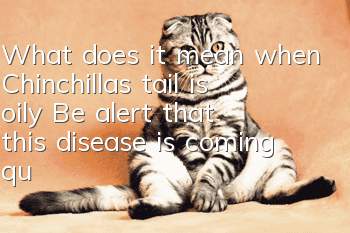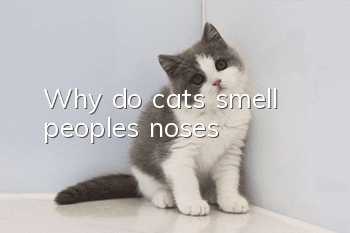What does it mean when Chinchilla’s tail is oily? Be alert that this disease is coming quietly!

What does it mean when a Chinchilla’s tail is oily? Beware that this disease is coming quietly! Many parents have found that the Chinchilla’s tail is oily. In this case, there is a high probability of folliculitis. Generally, parents often say that cats suffering from black chin or something are also suffering from folliculitis. They just say that folliculitis often occurs in cats besides their chin and tail.
What is the reason why Chinchilla’s tail is oily?
Folliculitis is caused by endocrine disorders. It manifests as many small black spots on the chin, which is what we call black chin. Folliculitis can even squeeze out sebum, which is as black as cinders and can also The root of the tail of some chinchillas also occurs. The root of the tail always looks dirty, as if it cannot be washed clean. However, Chinchilla black chin is not contagious. This situation is similar to the blackheads on the nose. If there are only small black spots on the chin, the owner does not need to worry too much. If the small black spots become inflamed and cause folliculitis, then Need to be taken to the hospital for treatment.
The same goes for the tail, because there are caudal fat glands on the tail. If they are blocked, they will become inflamed, and in severe cases, they may become pus-filled. Folliculitis on the tail is more common in male cats than in female cats. Most cats get better after neutering, but a few cats still have it. Sometimes folliculitis also occurs on chinchilla nipples. The specific manifestations of Ragdoll cats suffering from folliculitis are that the skin on the Ragdoll cat's chin and tail becomes black, red and swollen, and the tail hair becomes sparse. There are many thin black spots at the roots of the hair. If you wipe it with your hands, you will find the hair. It was also easily wiped off. The skin in the area with black spots was obviously red, and the cat felt pain when it was wiped off.
In this case, parents should first shave off the hair on the cat's folliculitis area, and then clean the affected area with soapy water or alcohol. Then, after the black cinder-like stuff is washed away, apply erythromycin ointment to reduce inflammation. If you persist for a while, it will get better.
- The cat keeps meowing with its tail raised
- Things to note during cat training. Even an unruly cat can be obedient!
- What should I do if my cat likes to scratch the sofa? How to change my cat’s habit of scratching the sofa?
- Why don’t cats like to have their nails cut?
- What should newbies pay attention to when raising cats?
- Can cats eat dragon fruit?
- Is it normal for a cat to move a kitten in its mouth?
- 5 Frequently Asked Questions About Domestic Kittens
- Cat vomits water-like liquid
- How should you treat the wound after being bitten by a cat? Look over here!



